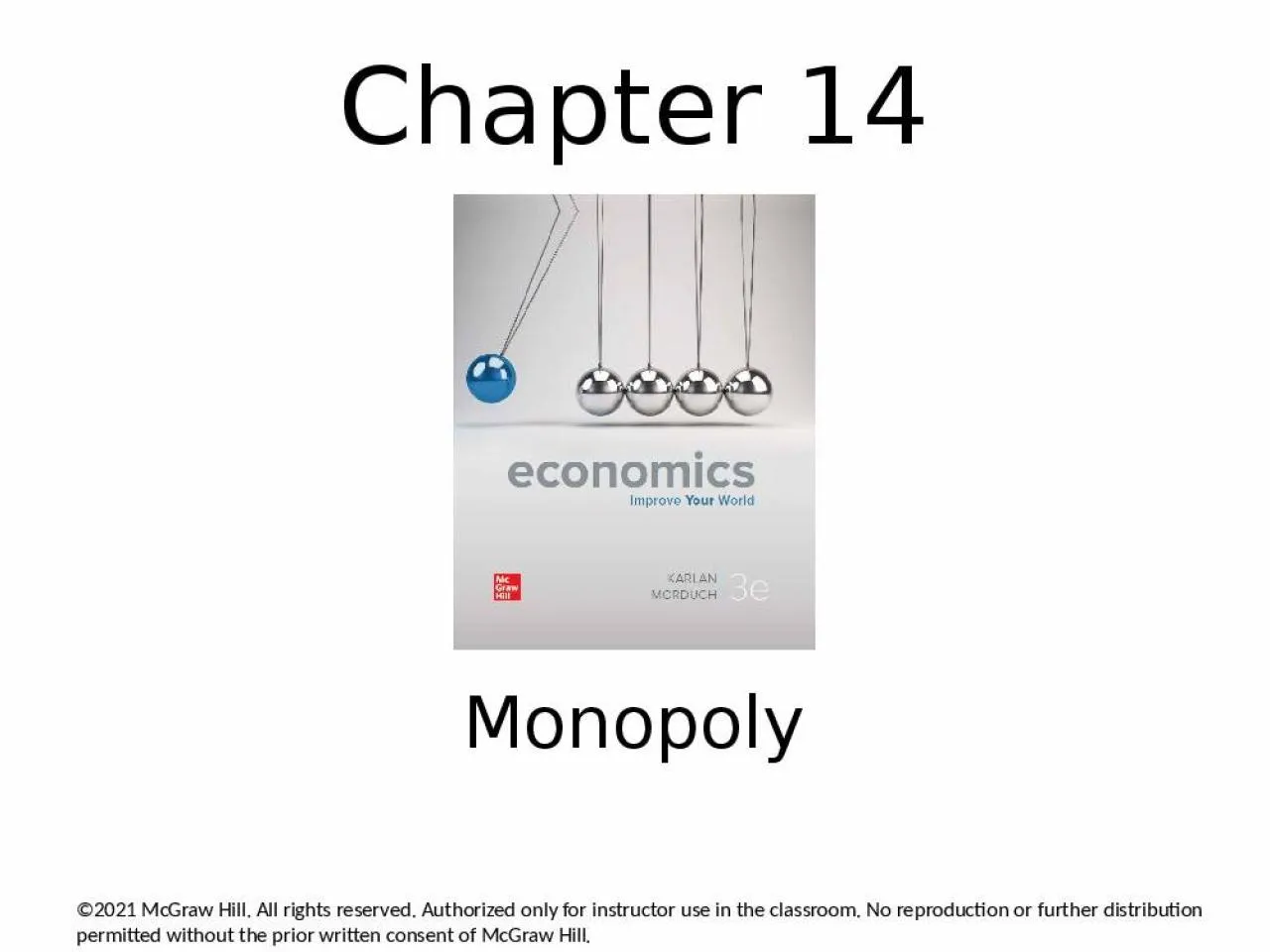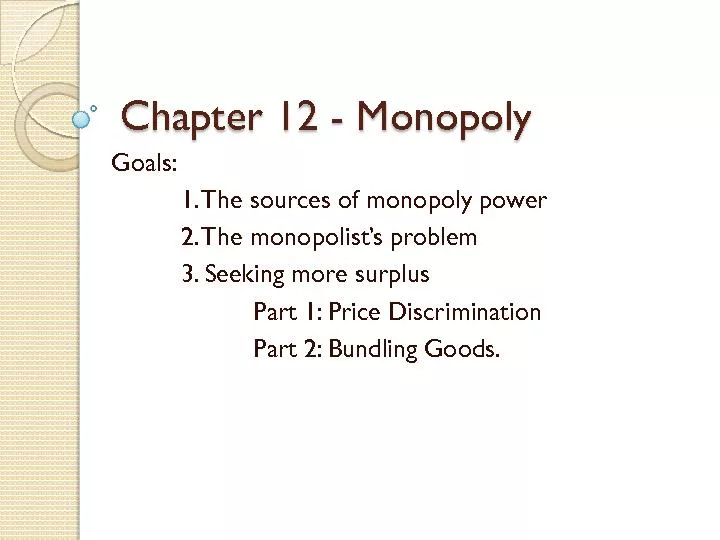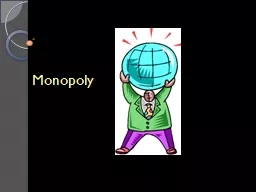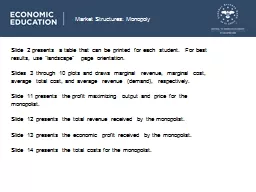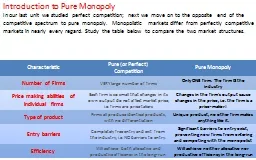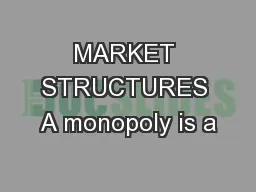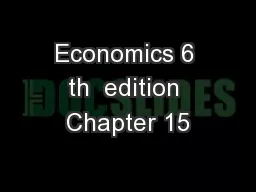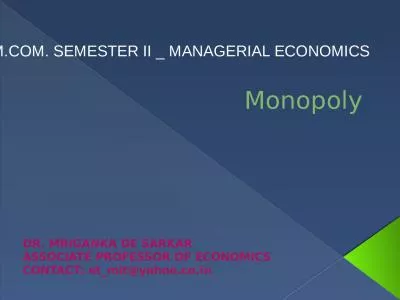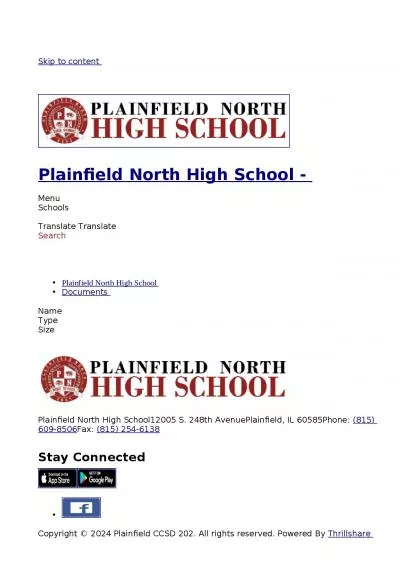PPT-Chapter 14 Monopoly What will you learn in this chapter?
Author : kimberly | Published Date : 2024-07-08
What are the four barriers to entry Why monopolists are constrained by demand How monopolists set price and quantity What social welfare losses are associated
Presentation Embed Code
Download Presentation
Download Presentation The PPT/PDF document "Chapter 14 Monopoly What will you learn ..." is the property of its rightful owner. Permission is granted to download and print the materials on this website for personal, non-commercial use only, and to display it on your personal computer provided you do not modify the materials and that you retain all copyright notices contained in the materials. By downloading content from our website, you accept the terms of this agreement.
Chapter 14 Monopoly What will you learn in this chapter?: Transcript
Download Rules Of Document
"Chapter 14 Monopoly What will you learn in this chapter?"The content belongs to its owner. You may download and print it for personal use, without modification, and keep all copyright notices. By downloading, you agree to these terms.
Related Documents

